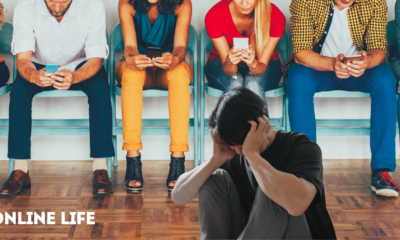Lifestyle
3 Ways Older People Can Stay Active When Stuck At Home

Older and stuck at home? While this ensures your safety during the coronavirus pandemic, it also means you can’t access your gym or go out for a walk. And inactivity can cause mental and physical health problems. So, what’s the solution? Exercise at home.
As you get older, it becomes more important than ever to stay active and healthy, but home confinement could get in the way of that. So, experts who study exercise and aging offer fitness tips for seniors during the lockdown – there are in fact many fun and easy things to do to keep yourself moving when stuck inside.
Health impacts of home confinement
According to several studies, the health impacts of prolonged home confinement are greater among older people. Adults who become inactive due to illness, injury, or requests from scientists quickly lose strength and endurance and end up developing early signs of insulin resistance and molecular changes associated with muscle loss. When younger people become active again, this physiological weakening usually reverses, but the effects can remain and speed up the onset of frailty in older people.
Some experts are concerned that this scenario is playing out among older adults as they’re ordered to stay at home due to COVID-19. It’s like “a slow-motion version of the kind of declines that usually occur when older people are hospitalized or bedridden,” says Dr. Louise Aronson, a professor of geriatrics and health at the University of California, San Francisco.
At-home workout tips for seniors
Regardless of your age, be it 50, 60, or 70, it’s important to move whenever and however you can, using whatever equipment you have at hand. So, whether you’re new to working out or want to start moving and exercising again, Dr. Aronson and other exercise scientists offer tips for staying fit and strong during the coronavirus lockdown:
1. Do aerobic exercise
Experts suggest starting with aerobic exercise such as walking. Dr. Aronson recommends walking around the room or up and down a corridor when talking to someone on a cordless phone. If you’re watching TV, get up during the commercials and stroll around the house. And if you have a staircase, climb the stairs 1-2 times.
You should aim to walk from room to room or up and down a hallway at least three times a day, Dr. Aronson says. It may only take two or three minutes, but it’ll bring big health benefits in the long run.
2. Try strength training
Strength training (aka weight training or resistance training) can help you avoid losing muscle mass and strength while stuck at home. Here are the different types of muscle workouts you can do according to certain body parts:
- Legs: The wall squat is a good example, says Dr. James Gladstone, the chief of sports medicine at Mount Sinai Health Center in New York City. Simply stand up straight a foot or so from a wall with your legs shoulder-distance apart, then press your back against the wall and slide down until your thighs are parallel to the ground. Hold this position for as long as you’re able to, then slide back up the wall, rest for a few seconds, and slide down to squat again.
- Upper body: Grab a pair of soup cans or fluid-filled water bottles from the kitchen, suggests Jennifer Copeland, a professor, and director of the Active Healthy Aging lab at the University of Lethbridge in Alberta, Canada. Grip them with your arms by your side, palms forward, and then slowly bend your elbows to curl the can or bottle up to shoulder level. Lower and repeat.
- Shoulders: Got an empty gallon milk jug? Partially fill it with water, hold it in both hands with your arms straight in front of you, and then slowly raise it to face level. Lower and repeat. You can do this exercise while sitting down.
- Arms: You can strengthen your arms by reseating yourself several times. Sit on a chair, place your hands on the edge of the seat, start to get up, and then sit back down instantly. Partially rise a few more times while using your arms for support and leverage. You can also do a few countertop push-ups in the kitchen, says Aleisha Fetters, a certified strength and conditioning specialist. Stand a few feet away from the counter, grasp the edge with straight arms, then lean toward it, hinging from the ankles with your back straight, and bend and straighten your elbows.
3. Take online exercise classes
Taking exercise classes online using a tablet or computer is one of the best ways to stay safe and active at home during the COVID-19 pandemic. Many classes are oriented toward older or inexperienced exercisers and are conducted by a personal trainer or expert instructor. You can pay for a live class or find a range of free workouts tailored to your fitness level. Here are some you may like to try:
- PE with Joe for Seniors (free)
- Tai Chi and Qigong (has a cost)
- Online Ballet for Seniors (free)
- Yoga on Demand ($9 per week)
- Yoga for Everyone (free)
- Home workouts devised by exercise physiologists (free)
- Six-minute workouts (free)
- YMCA Health and Fitness Videos (free)
- Bold for Seniors (free)
- Exercising at Home with NCHPAD (free)
Get moving now
You have more time to yourself than ever before, so why not spend that time exercising? A lockdown is no excuse to be inactive as you don’t have to step out of the house to work out. Plus, regular activity is good for your mental and physical well-being. If you are stuck at home, it could also be a time to sort out health or life insurance.
If you are already insured, it’s unlikely that your policies will be directly impacted by coronavirus, but it’s still smart to review your policies and check that they still meet your needs.
If you’re over 40, new to exercising, or have health problems, speak to your doctor first before starting any exercise program. They can work with you to establish a program that’s suited to your needs to ensure you get the best results.
-

 Business6 days ago
Business6 days agoS&P 500 Soars in Best May in Decades Amid Tariff Relief and Nvidia’s Surge
-

 Immigration6 days ago
Immigration6 days agoTrump’s Immigration Crackdown: Legal Battles and Policy Shifts
-

 Business6 days ago
Business6 days agoUS Stock Market Soars in May Amidst Tariff Tensions and Inflation Worries
-

 Government6 days ago
Government6 days agoTrump Administration’s Government Reshaping Efforts Face Criticism and Legal Battles
-

 Business6 days ago
Business6 days agoTrump’s Tariffs: A Global Economic Reckoning
-

 Foreign Policy3 days ago
Foreign Policy3 days agoInside Schedule F: Will Trump’s Federal Workforce Shake-Up Undermine Democracy?
-

 Press Release3 days ago
Press Release3 days agoIn2space Launches Campaign to Make Space Travel Accessible for All






























